The Berlin Wall Memorial Illuminates Berlin’s Divided Past
The consequences of the division of Berlin by the Berlin Wall (1961-1989) are visible all over the city. The Wall was a wide, empty gash through the city, and that gash has, ever since the Wall “fell” in 1989, been repurposed in a variety of ways.
In some places, buildings encroach on the space: Potsdamerplatz is a good example, where some fancy modern buildings tower over the strip that was once the Wall. A few panels from the original Wall stand on the sidewalk at Potsdamerplatz, mostly serving as a background for tourists’ selfies.
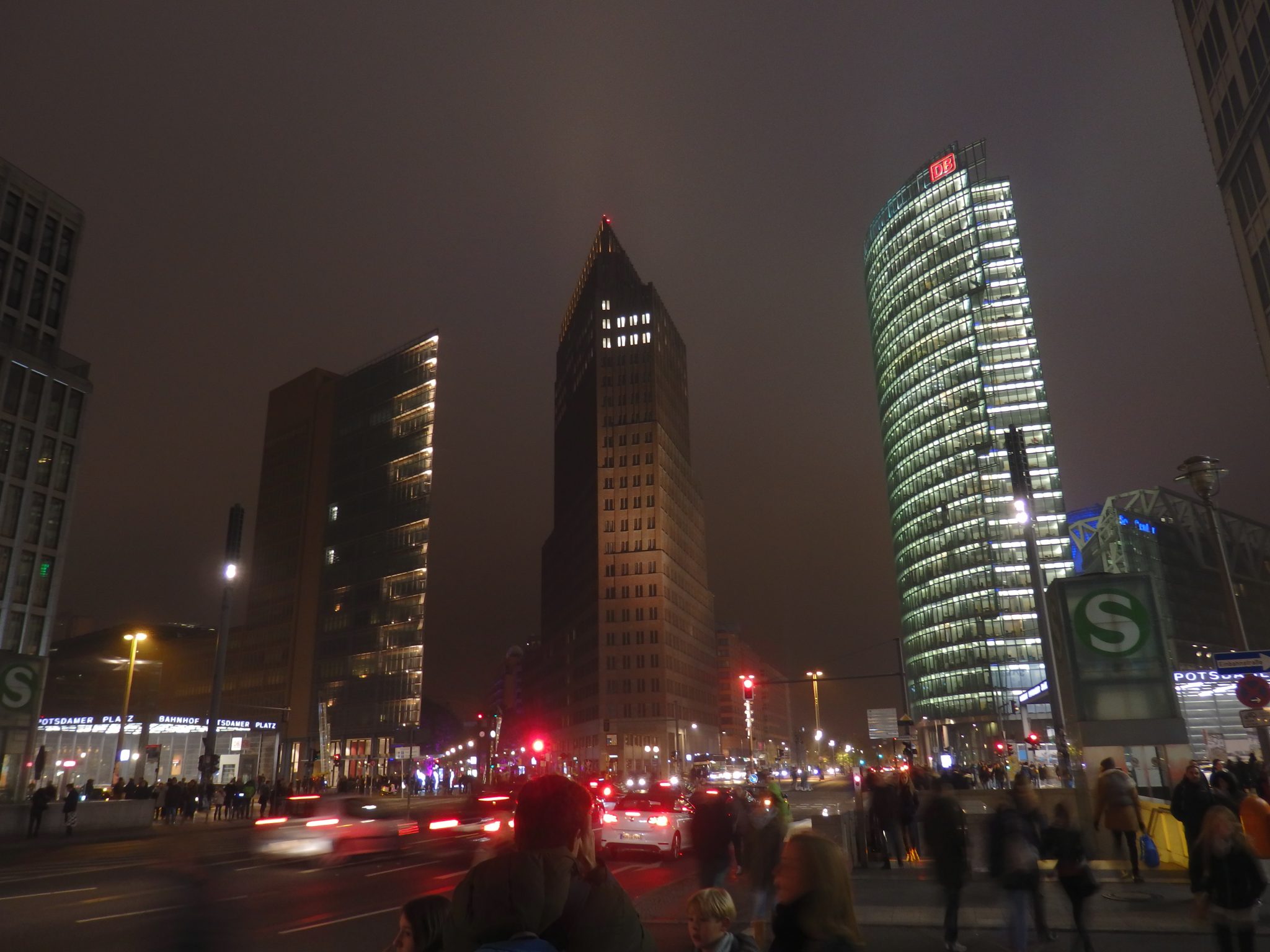
Apparently, the pieces of the wall are protected by law, but the land they stood on is not, so the remaining panels get moved around by developers, and many are scattered around the city. I came upon them here and there, standing forlornly in front of businesses, for example.
In many places, a street follows the course of the old barrier, so that buildings from the former East Germany face buildings from the former West Germany across the busy traffic.
The Berlin Wall Memorial
At the Berlin Wall Memorial, some preserved sections of the Wall serve both as a memorial and a museum. It was, in reality, two walls: an outer wall and an inner wall and the no-man’s land in between. The graffiti-covered concrete that you picture was the outer wall, the first one built. The graffiti artists were West Germans. East Germans could not have gotten away with painting graffiti, so their side of the inner wall was not painted until the Wall came down.
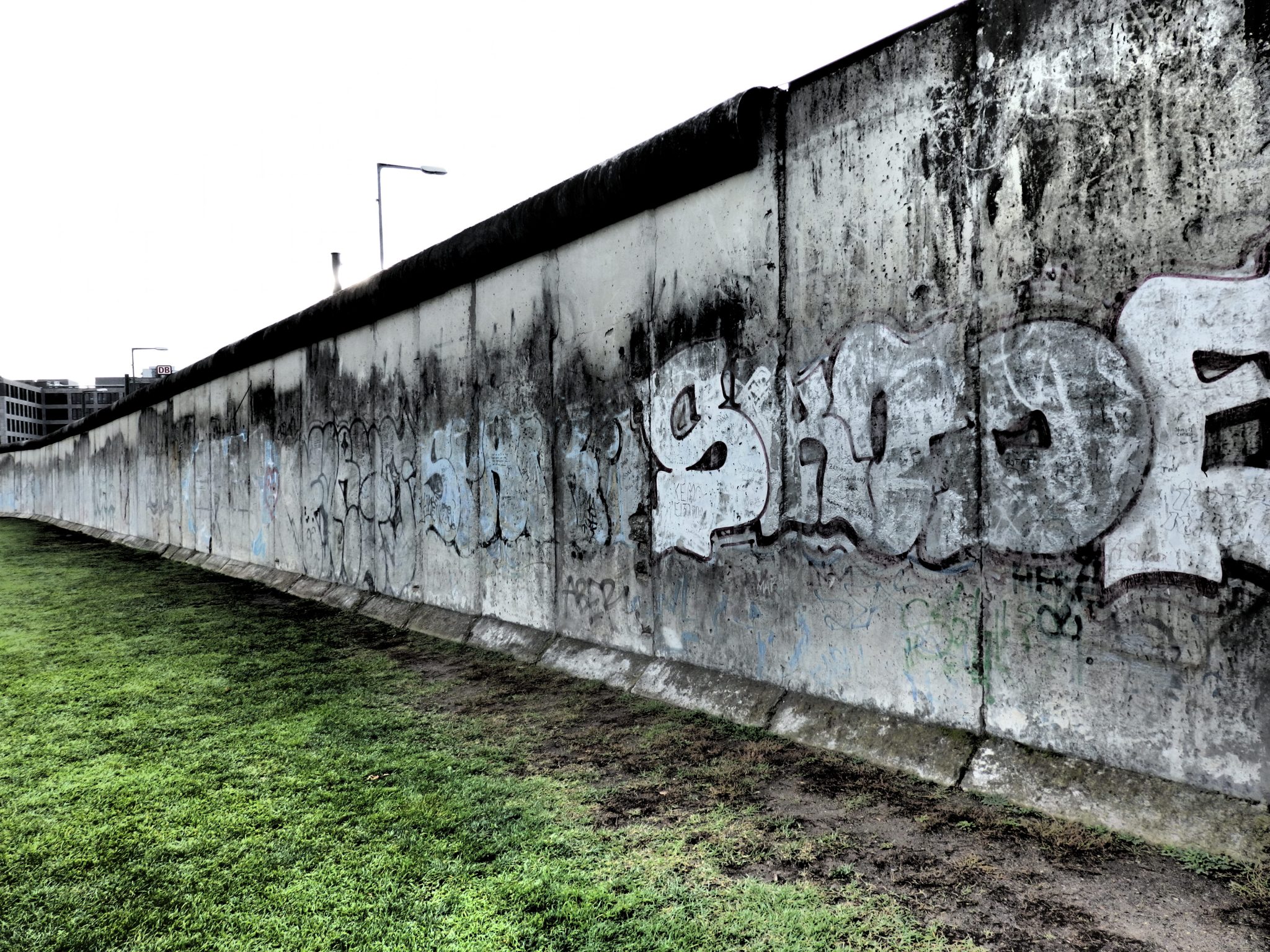
Stretching several blocks (1.4 kilometers in total) along Bernauer Strasse, the Berlin Wall Memorial seems more like a city park than anything else at first glance. In the grassy space that was once a no-man’s land, people walk dogs, bicycle, or jog.
But when I slowed down and looked, I saw that the whole thing is a cleverly preserved piece of history, as well as an outdoor museum.
History of the Berlin Wall
From the time of the establishment of East Germany in 1949, Berlin was where many people (2.6 million, according to Wikipedia, the font of all knowledge) made their escape from East into West Germany. It was relatively easy to cross, since it could be as simple as crossing a street or taking a metro.
To the East German government, though, this was a problem. For one thing, it was bad for its image that so many people wanted to leave. It also represented a significant brain drain that was bad for their economic plans. So they built the Wall, officially the “Anti-Fascist Protective Wall.”
When the Berlin Wall first went up, in 1961, it wasn’t actually a wall. The East German army hastily erected a barbed wire fence. Over the years following that first barbed wire fence, the East German government built a more permanent concrete wall. Then a second wall paralleling the first one—an inner wall about 100 meters away—was added. Other obstacles between the two walls prevented vehicles from crashing through. Watchtowers allowed guards to shoot anyone who tried to cross. Dogs and armed patrols kept watch along the “death strip” between the walls.
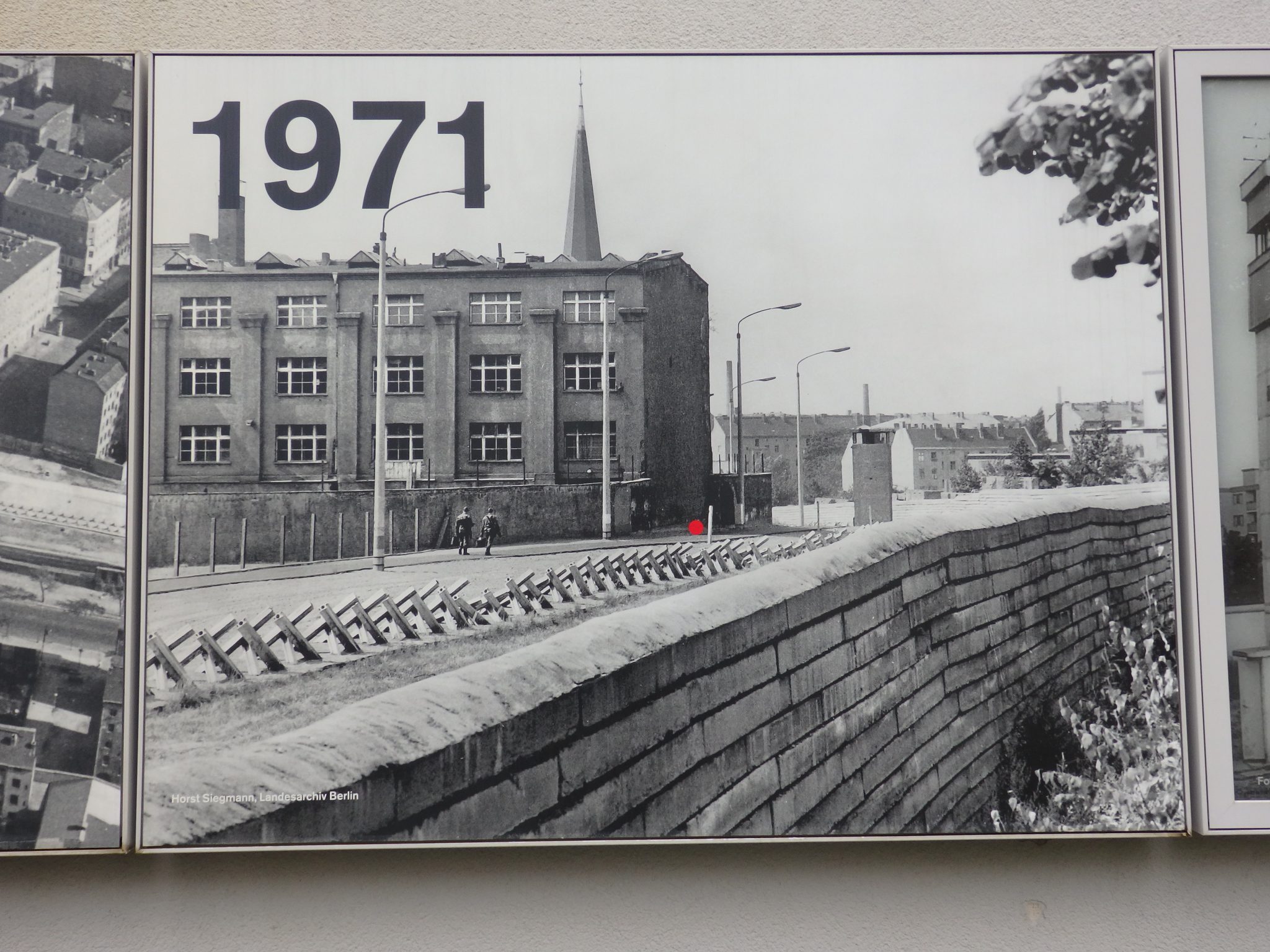
You might also want to read my article about lots of World War II and Cold War sites in Berlin that you can visit.
Bernauer Strasse
In the northern part of the city center, the Berlin Wall followed Bernauer Strasse. This was where the most dramatic images that we remember of the Berlin Wall happened. Those photos of people jumping out of windows, for example, happened here.
As the Wall became permanent, the windows facing West Germany on the East German side of the street were bricked up. Eventually, the government forced the residents to move. Later, the houses were demolished.
One side—the West Berlin side—of the Berlin Wall Memorial is lined with tall metal spikes, meant to show where the outer wall ran. The line of spikes ends where a piece of the wall still stands.

On the East Berlin side, some pieces of the inner wall still stand, along with original buildings and some very chic new homes. Large photographs on this side illustrate the stages of the building of the wall and dramatic scenes of people escaping out windows.
As I walked through the park, I noticed metal markers in the grass along the path. Here and there stand multimedia stations—a collection of vertical posts set with text, video and photos—explaining what I was seeing. The metal markers show the routes of the various tunnels that East Germans dug to escape to the West. They also indicate outlines of the houses that lined the street.
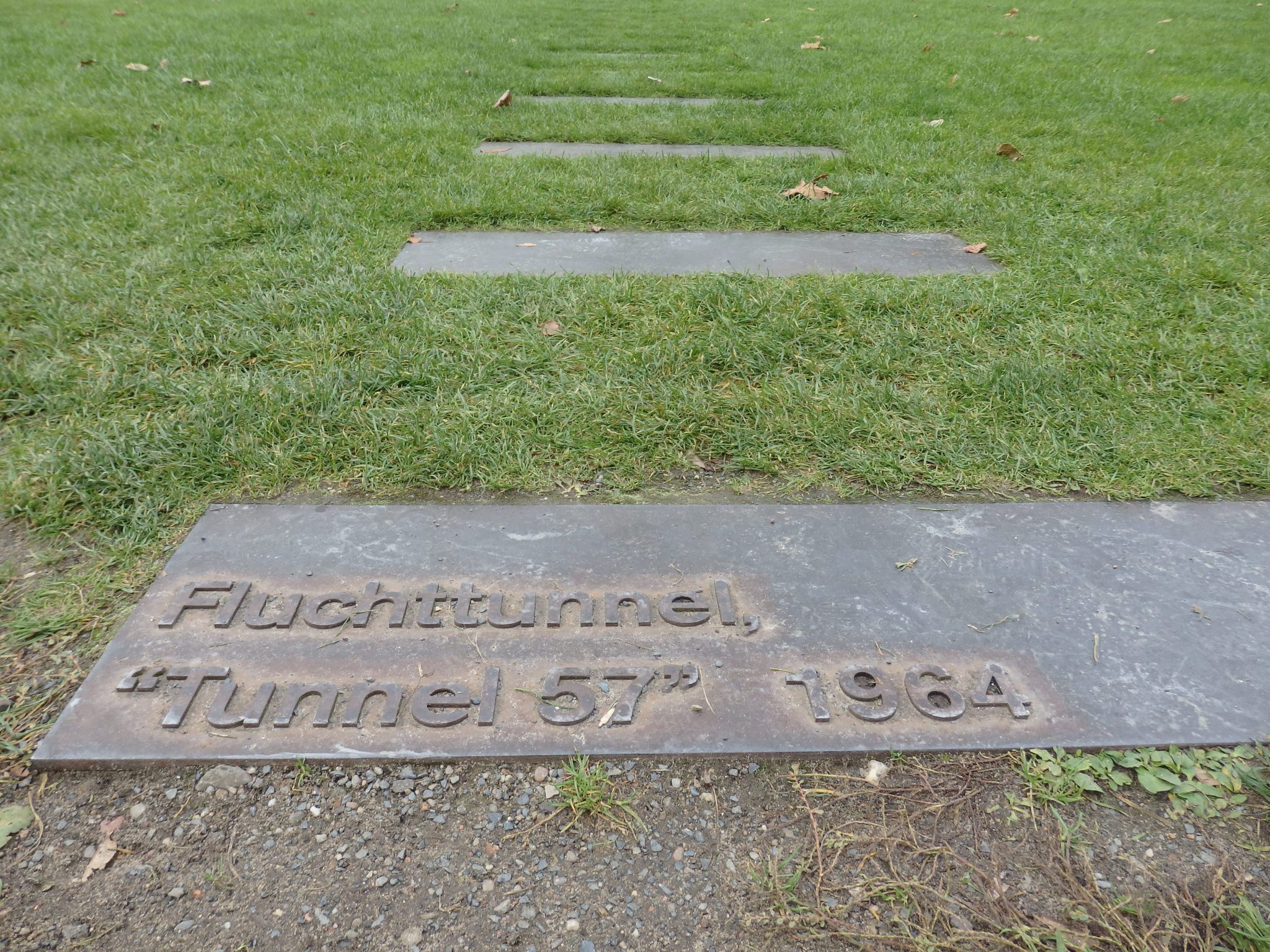
The multimedia stations tell the history of the wall, and the stories of those who escaped as well as those who died trying. These are personal stories that effectively express the feeling of imprisonment and oppression that East German residents felt, and the very real fear that accompanied any decision to try to escape.
At one point in the park is a memorial wall, called a “Window of Remembrance,” dedicated to those who died trying to cross over. It displays their individual portraits. People have left candles and other small markers, showing that this is a true place of mourning to this day.
Nearby stands the Chapel of Reconciliation, built on the spot where the Church of Reconciliation stood. That church stood empty, trapped inside the death strip, until the East Germans eventually tore it down to create clearer sight lines.
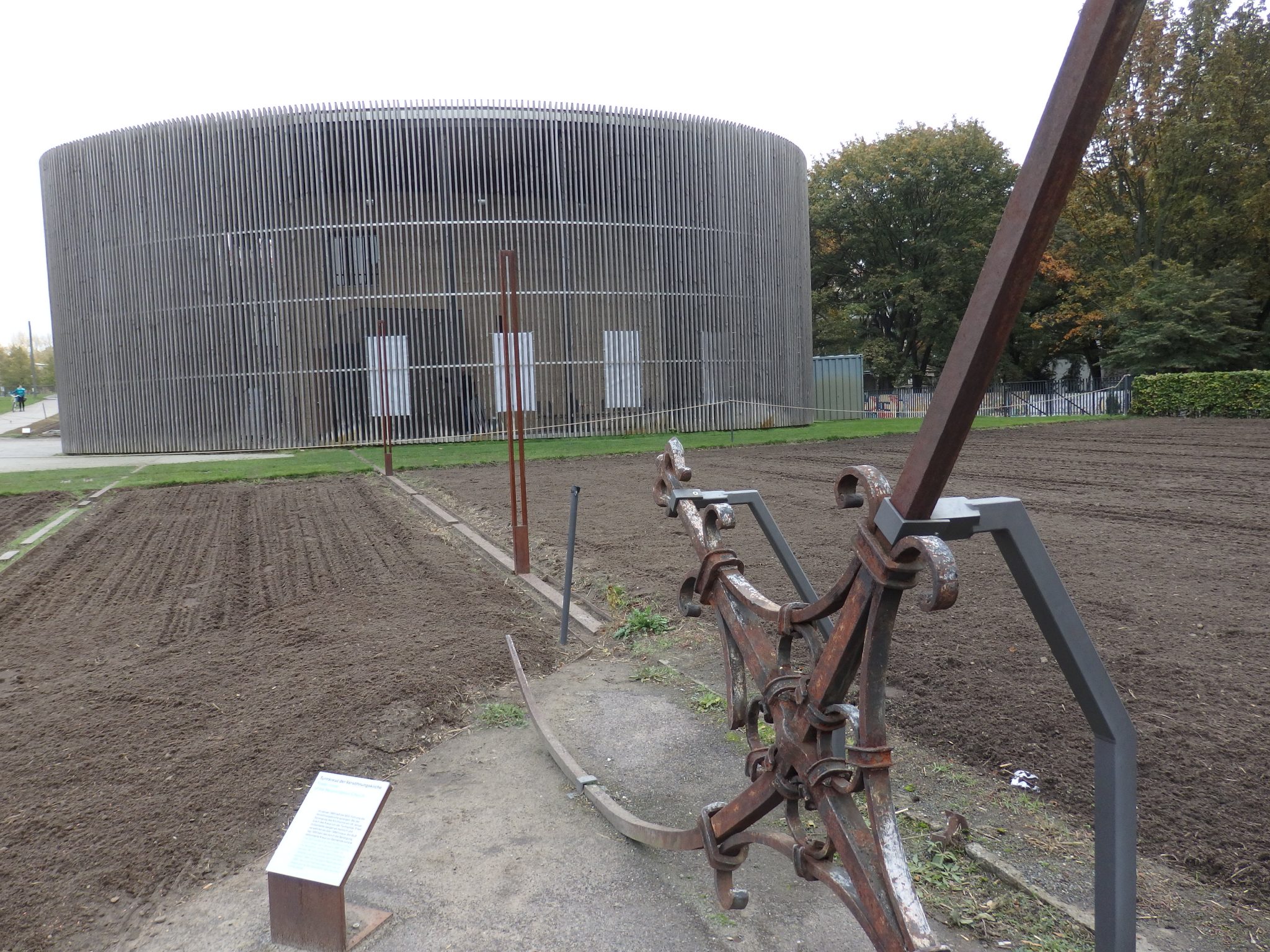
The new chapel is an interesting rounded structure. Inside, light enters from above. With an open wooden framework on the outside, the single rounded inner wall looks unfinished. It consists of pressed earth containing bits of the rubble from the original church.
Toward one end of the park is a section of the Wall that has been restored to how it looked in 1989, just before the Berlin Wall fell. The intact inner and outer sections of the Wall enclose a barren no-man’s land, over which a watchtower looms. In order to see it, visitors can climb a viewing platform.
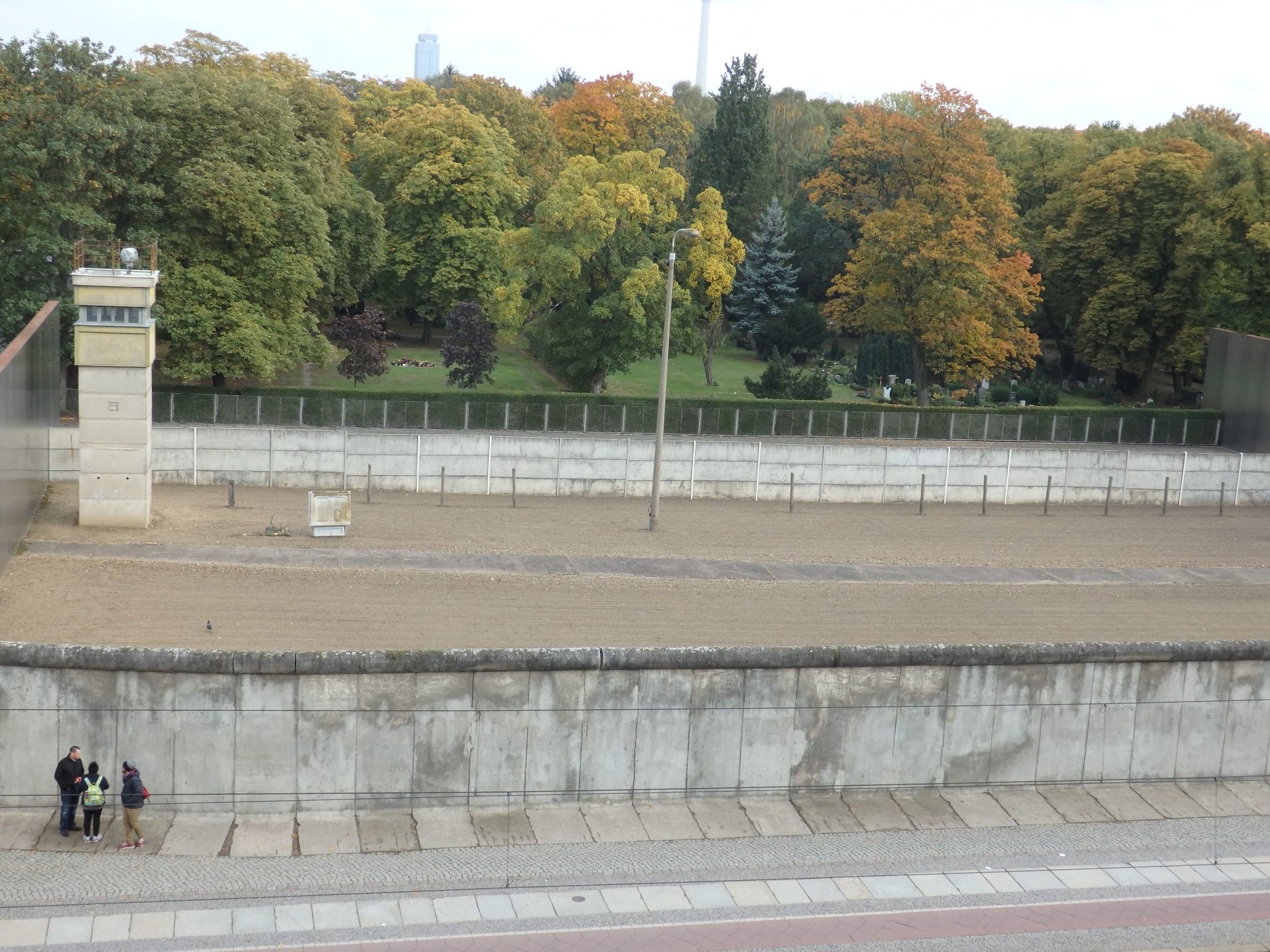
Ghost Stations
I left the Berlin Wall Memorial and entered Nordbahnhof metro station, only to find that the memorial continued inside. An exhibition explained that this and several other metro stations became “ghost stations” during the Berlin Wall’s lifetime.
Berlin already had a comprehensive system of trains and metros before the Wall appeared. Three of the lines, however, crossed East Berlin territory as they passed between two different parts of West Berlin. The trains did not stop at these stations, and even if they did stop, East Germans soldiers prevented anyone getting on or off. West German passengers just saw the stations go by through the windows. Fortifications around the stations stopped East Germans from trying to escape through the underground tunnels.
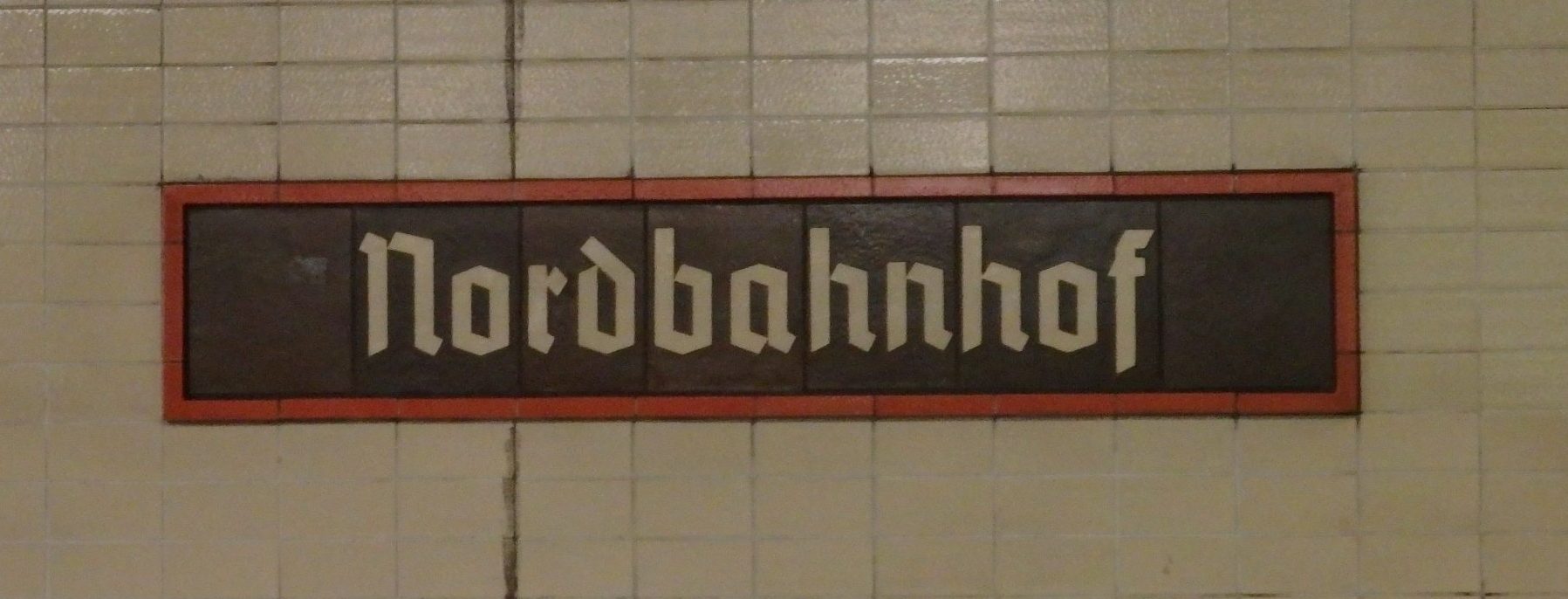
I found this story particularly telling within the wider narrative of a city divided by the Berlin Wall. I knew the general history of its division, but it had never really sunk in how close the two sides were. The idea that trains passed—literally—under a foreign country while never leaving the city … or the idea that a person could climb out their window and be in a different country … It is just astonishing to me that this went on for the Berlin Wall’s whole 28-year existence.
The Palace of Tears is another piece of this history that has been preserved: an East German station hall where East Germans leaving legally said good-bye to their families. Read my article about it here.
The Berlin Wall Memorial also helped me understand what life was like in the divided city. Unlike most parts of the Wall around Berlin, this section shows the size of the no-man’s-land between the two walls. It was a gash—a massive wound—through the city. The Berlin Wall Memorial is one of the ways that the city deals with the scars.
Berlin Wall Memorial: Bernauer Straße, Berlin. Outdoor exhibits open daily 8:00-22:00. Documentation center open Wed-Sun 11:00-17:00. Ghost Station open whenever the Nordbahnhof metro station is open. Admission: free.



Rachel, I always appreciate your posts and this one, in particular, hits home as I prepare for my 8th trip in 4 years to Cuba. The U.S. embargo of economic punishment against the Cuban people was enacted by Congress in Oct. 1960, close to the same time as the Berlin Wall was erected. There are many similarities, especially in terms of citizens risking their lives to escape. I marvel at how governments can enlist soldiers, bureaucrats, judges and executioners to kill and imprison their fellow countrymen when many themselves yearn for freedom on the “other side.” While the Wall came down in 1989 and many memorials – as you beautifully document here – mark its horrible legacy, the embargo continues and the majority of the Cuban people suffer. But they suffered too at the hands of the U.S.-endorsed Batista regime and the U.S. mob that funded the playground for the rich that Havana was in the 1950s. My hope is that one day Cubans might experience real freedom for the first time in their history, and build memorials to all the oppression that went before… lest we forget, and that it may never happen again.
Amen to that! One of the most moving photos I saw was taken on the first day, when the barbed wire fence was being put up. In the photo, a soldier is mid-leap going over the fence from East Berlin to West Berlin. One wonders what the other soldiers thought about as their fellow soldier crossed over. Did they want to join him? Were they afraid? Or did they have family they couldn’t leave?
When my mom and sister and I visited Berlin in 1966 the wall between West Berlin and East Germany was still being constructed right next to the campground where we staying.
What stands out most about that sight was the number of guards armed with machine guns overseeing the work. There were more guards than workers.
My mother remarked, “If a car backfires and someone opens fire this will be a massacre.”
Wow, amazing that you as an American got to see it as it was happening!
I can’t help but reflect this morning, the night after the US Presidential election, that another wall will be built soon… A very timely post, Rachel.
Very well written and photographed post. I was struck on our trip to Berlin by how you didn’t have to look very hard to see the remnants of this part of the city’s history. It should serve as a living reminder for the future.
Yes, the history is visible and still shows its scars. And that’s a good thing, I think.
My daughter was just in Berlin a week ago standing at this very wall, so I was interested in this post. Such an intriguing history.
Rachel, I enjoy learning more about history thru your posts. I didn’t know that much about the Berlin Wall (there is a piece here in Los Angeles). To me, is ironic that the wall was up separating the people but there was still an underground connection. Certain individual made a big efforts to keep things separated but at the end they couldn’t hold that.
Yes, it is ironic. And people actually dug tunnels under the wall too!
It is hard to think of the wall being there and all the heartache that ensued for divided families. The thought of those who died trying to cross it is even more difficult. I do remember when it finally came down. I was surprised from afar and very happy. Thanks for showing us the memorial.
That decision to cross the wall must have been harrowing because it was so extremely risky. And even if you did make it over (or under), you never knew if you’d ever be able to see your friends and family again!
My husband visited Berlin as a child in the 1970s, and his father took photos of the Berlin Wall. I think it’s good that Germany acknowledges this part of their history instead of pretending that it didn’t happen. Most of what I’ve seen on other blogs is photos of the artwork on the panels, so I like that you took a more comprehensive view of what there is to see.
Maybe I just didn’t visit the right parts of the wall, but I didn’t find the graffiti particularly impressive. I saw much better street art on an Alternative Berlin walking tour, which I’ll post about soon.
I popped in and out of Berlin earlier this year and spend an hour or two near parts of the wall. Very somber and reflective place. My grandfather’s family fled what would become East Germany in 1926 and they just missed this horrifying life.
Yes, the Berlin Wall memorial is a good place for reflection. Your grandfather and his family were wise to leave when they did.
Really interesting. I never knew the Berlin Wall wasn’t actually a ‘wall’, per say. I remember when it came down – watching on the TV.
It was two walls, plus all sorts of security measures in between. I never realized that either! When it came down, a student of mine was leaving the next week with her family to visit Berlin. They packed hammers and chisels and she brought me back a piece.
Thx so much for sharing this post, Rachel, and for that glimpse at what was once the Berlin Wall. I’m sure you can;’t help but be filled with emotion when standing at that site.
It’s impressive, indeed.
Understanding the Berlin Wall takes some doing. I left that memorial confused. Your post helps enlighten and took me to some sights I had missed.
Glad I could help! It is an odd place in that the “exhibits” and explanatory signs are scattered outside along a path through a park.
Hi, Rachel. I would love to explore this outdoor (and indoor) museum! I was in Berlin when the Wall was still a significant part of life in Berlin. In fact, I experienced what happens when you didn’t have the right ticket when traveling from East to West. It was an honest mistake, but we were detained. Two of us were locked in a room, while the other went to purchase the right tickets. For three your women this was quite the adventure and one that had us shaking in our boots. I also remember the eerie feeling when we were traveling through East Berlin with the miles of barbed wire, and the guard dogs coming onto the train.
I was so surprised when I discovered a piece of the Wall here in Seoul a few weeks ago when I was on a food tour. I’m sure you read my post.
Thanks for hosting this week. #TPThursday
Your narrative really brings the wall to life. This is truly a living museum, with various sections, multiple stories, evolving displays, and continually changing surroundings and interpretations. So cool to read your post; I hope we get back to Berlin soon to explore more.